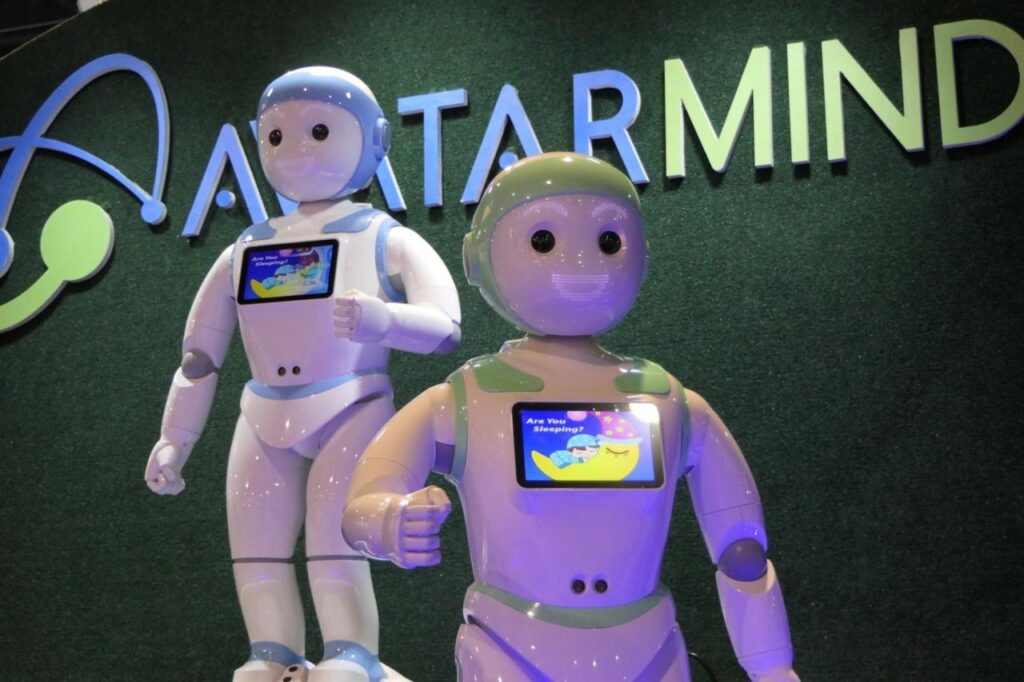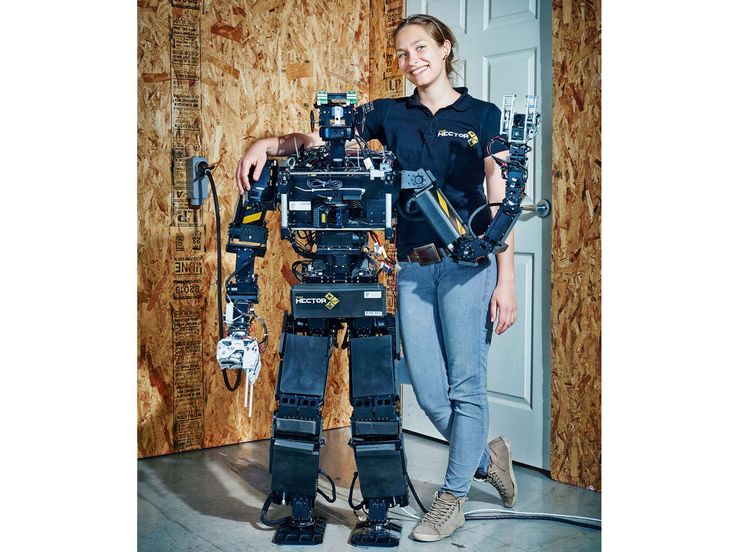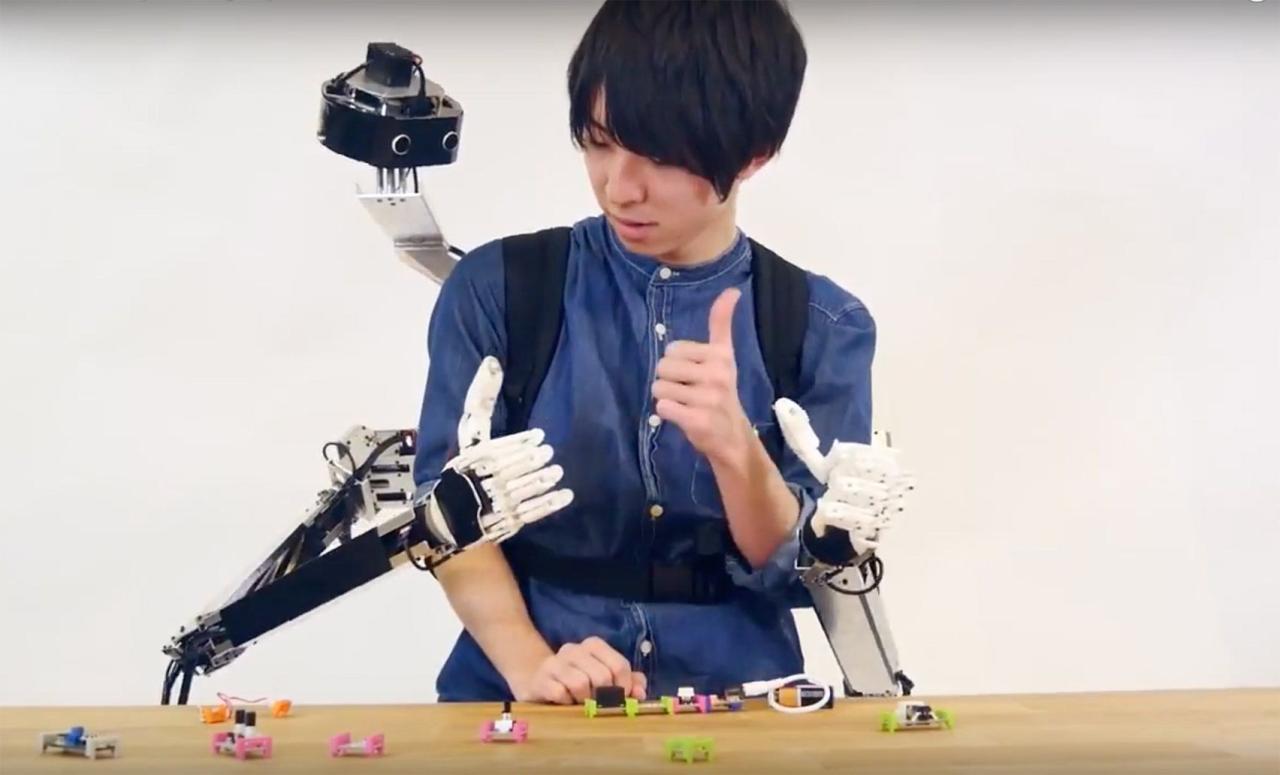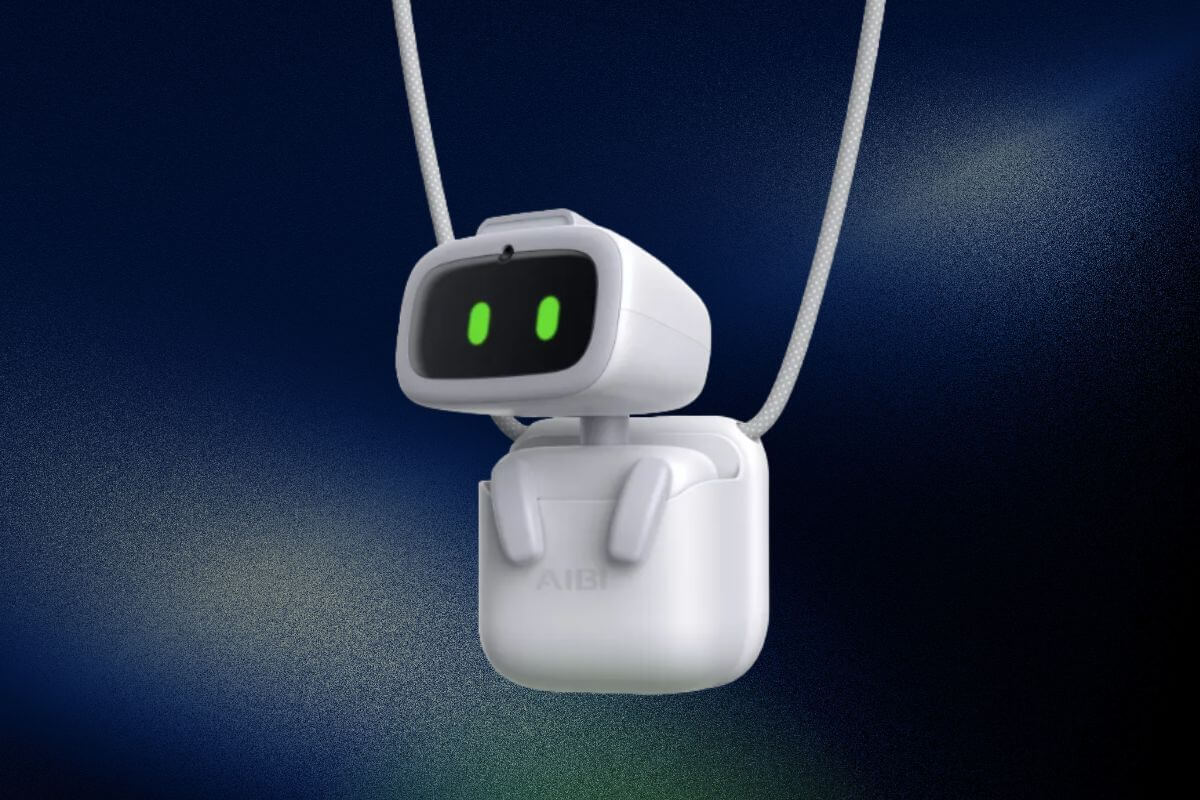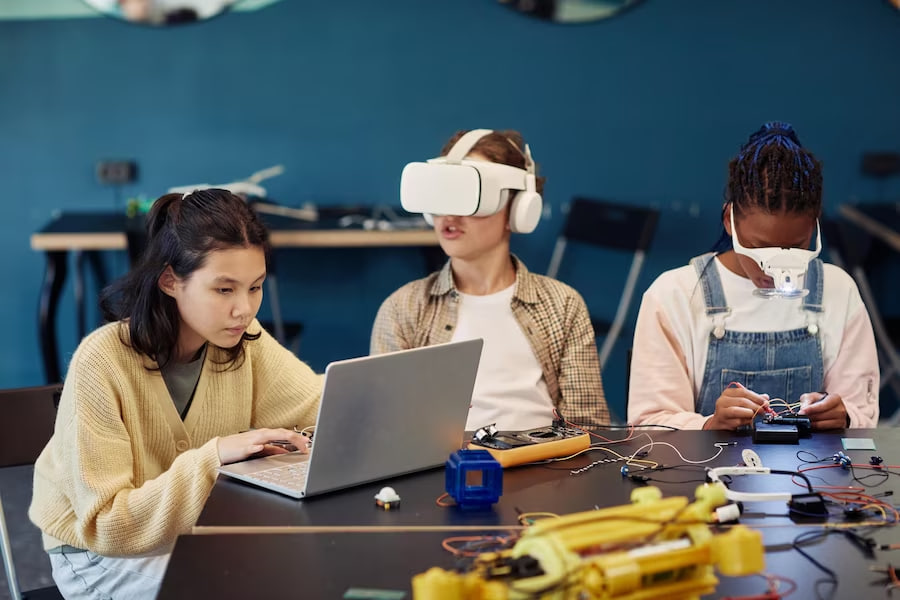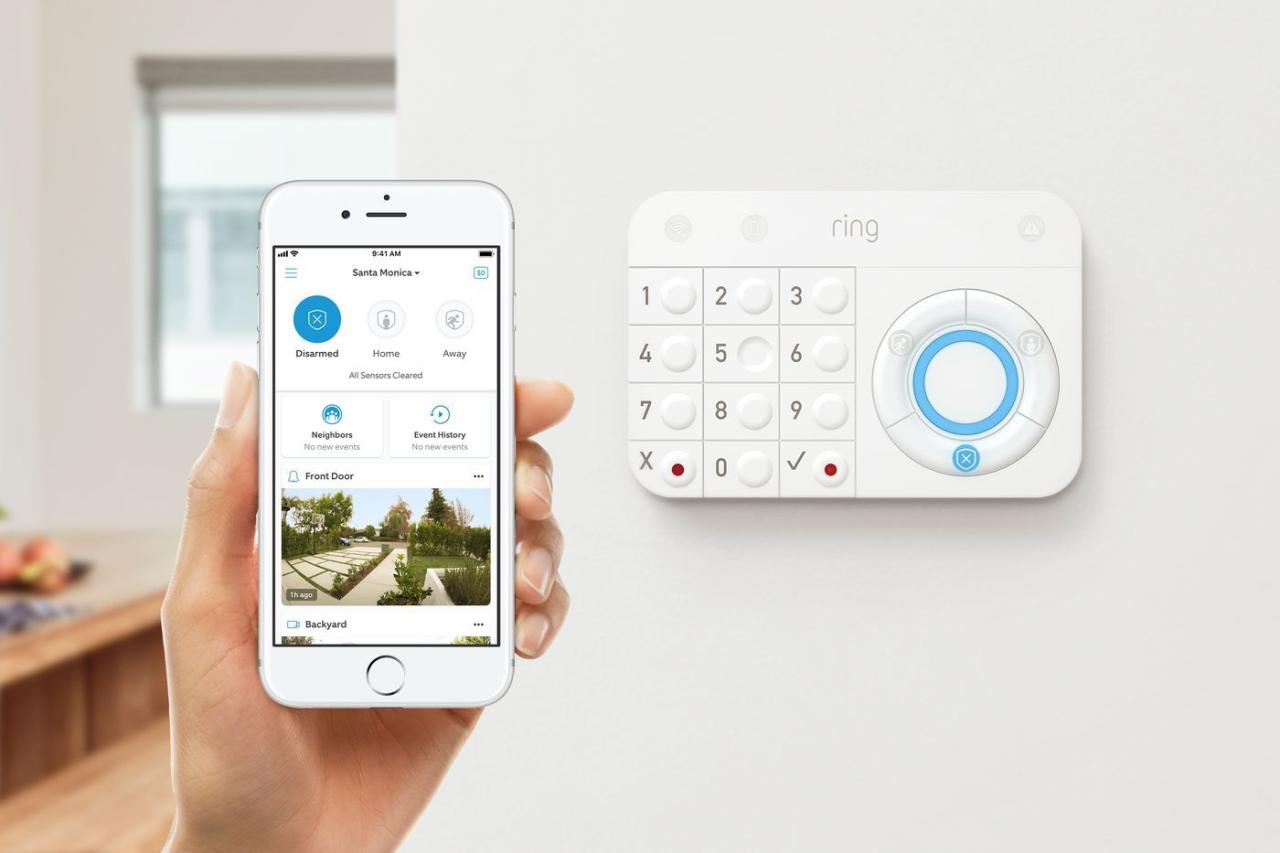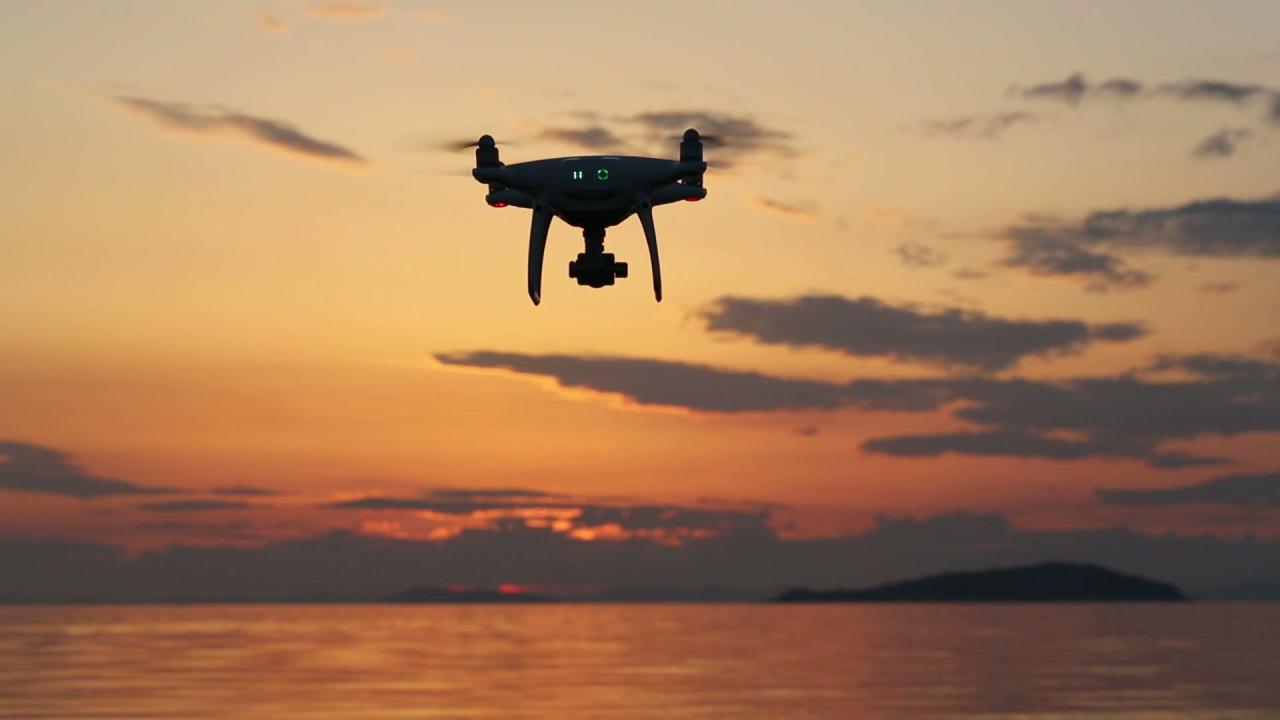The Dawn of Robotic Companionship
For centuries, the concept of robot companions existed primarily within the realms of science fiction, populating the pages of novels and the screens of blockbuster films. From helpful androids to loyal mechanical pets, these intelligent machines captured our imaginations, promising a future where technology seamlessly integrated with and enhanced our daily lives. Today, however, that future is rapidly becoming our present reality. Advancements in Artificial Intelligence (AI), robotics, sensor technology, and human-robot interaction (HRI) are transforming these fictional concepts into tangible products. No longer confined to industrial settings, robots are increasingly entering our homes, workplaces, and public spaces, evolving beyond mere tools to become genuine companions. This comprehensive article delves into the burgeoning world of robot companions, exploring the sophisticated technologies that power them, their diverse and expanding applications, the profound societal shifts they are initiating, and the ethical considerations that must guide their development. We will also look ahead to the exciting trajectory of this field, envisioning a future where intelligent, empathetic robots play an even more integral role in human society.
What Makes Robot Companions Possible?
The sophistication of modern robot companions is a direct result of breakthroughs across multiple scientific and engineering disciplines. These aren’t just remote-controlled toys; they are complex systems capable of perceiving, processing, and responding to their environment in increasingly human-like ways.
A. Artificial Intelligence (AI) and Machine Learning (ML)
At the heart of every intelligent robot companion lies advanced Artificial Intelligence (AI), particularly its subfield, Machine Learning (ML). AI enables robots to learn from data, make decisions, and adapt their behavior without explicit programming for every scenario.
- Natural Language Processing (NLP): This allows robot companions to understand and generate human language. Whether it’s understanding spoken commands, engaging in conversational dialogue, or responding with appropriate verbal cues, NLP is crucial for natural interaction. Advanced NLP models enable robots to discern nuances in tone, context, and even emotional states.
- Computer Vision: Robots use computer vision to “see” and interpret their surroundings. This involves recognizing objects, faces, gestures, and environments. For instance, a companion robot might identify its owner, detect obstacles, or understand a hand signal. It leverages deep learning models trained on vast image datasets to achieve remarkable accuracy in object detection and recognition.
- Reinforcement Learning: This is a dynamic learning approach where robots learn through trial and error. By interacting with their environment and receiving positive or negative feedback, they optimize their actions to achieve specific goals, such as navigating a complex home layout or learning to perform a new task more efficiently.
- Emotional AI (Affective Computing): An emerging and critical area for companionship, emotional AI allows robots to detect and potentially interpret human emotions through facial expressions, vocal tone, body language, and even physiological signals (like heart rate, if sensors are integrated). This enables more empathetic and contextually appropriate responses, crucial for building genuine companionship.
B. Robotics and Hardware Engineering
Beyond the software, the physical design and mechanical capabilities of robot companions are equally vital, determining their mobility, dexterity, and safety.
- Actuators and Motors: These are the “muscles” of the robot, enabling movement. Advanced, compact, and energy-efficient actuators allow for fluid, lifelike movements, whether it’s the subtle tilt of a head or the precise grip of a robotic hand.
- Sensors and Perception Systems: Robots are equipped with an array of sensors to perceive their environment.
- Lidar and Radar: Used for precise mapping, navigation, and obstacle avoidance, similar to autonomous vehicles. They create 3D representations of the surroundings.
- Cameras: Provide visual input for object recognition, facial recognition, and general situational awareness.
- Microphones: For auditory input, enabling voice command recognition and sound localization.
- Tactile Sensors: Allow robots to “feel” pressure, texture, and temperature, enabling gentle interactions and safe navigation around humans.
- Inertial Measurement Units (IMUs): Provide data on orientation, velocity, and gravitational forces, crucial for balance and stable movement.
- Battery Technology and Power Management: For robots to be truly autonomous companions, long-lasting and rapidly rechargeable batteries are essential. Innovations in energy density and power management systems are key to extending operational time.
- Human-Robot Interaction (HRI) Design: This field focuses on creating intuitive, safe, and pleasant interactions between humans and robots. This includes ergonomic design, non-threatening aesthetics, and intuitive control interfaces. The robot’s form factor, whether humanoid, animal-like, or abstract, significantly impacts human perception and acceptance.
C. Cloud Connectivity and Edge Computing
While much of the processing for real-time interaction happens on the device (edge computing), cloud connectivity is essential for learning, updates, and accessing vast databases.
- Cloud-Based Learning: Robots can upload data to the cloud for more extensive processing and machine learning model training. Insights gained from one robot can be shared across a fleet, allowing all robots to “learn” collectively.
- Over-the-Air (OTA) Updates: Cloud connectivity enables manufacturers to push software updates, new features, and security patches to robots remotely, ensuring they stay current and functional.
- Access to Information: Robots can access vast amounts of information from the internet, allowing them to answer questions, provide real-time updates, and engage in informed conversations.
The Expanding Realm of Robot Companions: Diverse Applications
Robot companions are not a monolithic category; they are being developed for a wide array of applications, each tailored to specific human needs and contexts. Their versatility is driving their rapid integration into various facets of our lives.
A. Companionship and Emotional Support
Perhaps the most intuitive application, these robots are designed to provide emotional connection and alleviate loneliness, particularly for specific demographics.
- Companions for the Elderly: Robots like Paro (a therapeutic seal robot) or Moxie are designed to engage with seniors, providing conversation, reminding them of medication, and promoting cognitive activity. They can offer a sense of presence and reduce feelings of isolation. Their gentle interactions and responsive behaviors make them ideal for this role.
- Support for Individuals with Special Needs: Robots can assist children with autism in developing social skills, provide structured interaction, and offer a predictable and comforting presence. They can serve as learning aids and motivational tools.
- Pet Robots (e.g., Sony Aibo, Boston Dynamics Spot Mini): These are designed to mimic the behavior and companionship of real pets without the associated care responsibilities. They can play, respond to commands, and even learn new tricks, offering joy and comfort. More advanced models are incorporating more sophisticated AI to make their interactions feel genuinely responsive and affectionate.
B. Home Assistance and Smart Living
Beyond simple automation, companion robots are integrating into the smart home ecosystem, offering personalized assistance and enhancing convenience.
- Personal Assistants with Embodiment: Unlike smart speakers, these robots have a physical presence. They can move around the house, follow users, and provide proactive assistance, such as reminding you of appointments, fetching small items, or controlling smart home devices. Examples include Amazon Astro and emerging humanoid robots.
- Domestic Chores and Maintenance: While robotic vacuum cleaners are common, future companion robots might take on more complex tasks, such as folding laundry, organizing spaces, or even preparing simple meals. Their ability to learn and adapt to unique home layouts is key here.
- Security and Monitoring: Companion robots can patrol homes, monitor for intruders, detect unusual activity (like a fall by an elderly occupant), and send alerts. Their mobility allows for comprehensive coverage.
C. Education and Skill Development
Robot companions are proving to be effective and engaging tools in learning environments, from early childhood education to adult skill acquisition.
- Educational Playmates: Robots can interact with children, teaching them language, basic math, and problem-solving skills through engaging games and stories. Their interactive nature can hold a child’s attention more effectively than traditional methods.
- Language Learning Tutors: AI-powered companion robots can provide interactive language practice, correcting pronunciation, explaining grammar, and engaging in conversational drills.
- Coding and STEM Education: Robots designed for educational purposes can introduce students to programming concepts, robotics, and engineering in a hands-on, engaging way.
- Lifelong Learning Companions: For adults, these robots could offer personalized courses, intellectual stimulation, and reminders for continuous learning, adapting to individual learning styles and interests.
D. Healthcare and Wellness Support
In healthcare, robot companions offer invaluable support, easing the burden on human caregivers and enhancing patient well-being.
- Rehabilitation Assistants: Robots can guide patients through physical therapy exercises, providing real-time feedback and tracking progress. Their consistent presence can motivate patients during recovery.
- Medication Reminders and Health Monitoring: Equipped with sensors, robots can remind patients to take medication, monitor vital signs (like temperature or heart rate), and alert caregivers to anomalies.
- Companionship in Hospitals/Care Facilities: Robots can provide companionship and entertainment for long-term patients, reducing feelings of isolation and improving mood. They can play games, read stories, or facilitate video calls with family.
- Mental Health Support: While not a replacement for human therapists, some companion robots are being developed to offer basic cognitive behavioral therapy (CBT) exercises, mindfulness prompts, and empathetic listening to individuals struggling with mental health challenges.
E. Retail and Hospitality
In commercial settings, robot companions are enhancing customer experiences and streamlining operations.
- Customer Service Robots: These robots can greet customers, answer frequently asked questions, provide directions, and offer personalized recommendations in retail stores, hotels, or airports. Their multi-language capabilities are a significant asset.
- Entertainment and Engagement: Robots can provide interactive entertainment, perform dances, or engage in playful banter, creating a unique and memorable experience for visitors.
- Assistance for Staff: While not directly companion roles, robots that assist staff with tasks like delivering items or cleaning can free up human employees to focus more on direct customer interaction, indirectly enhancing the “companion” aspect of human service.
Navigating a Robot-Integrated Future
The integration of robot companions into society brings forth a complex array of opportunities and challenges that demand careful consideration and proactive planning.
A. Psychological and Emotional Impact
The deepest impact of robot companions will likely be on our psychological and emotional well-being.
- Addressing Loneliness: For many, particularly the elderly or socially isolated, robot companions can genuinely alleviate loneliness and provide a sense of connection, comfort, and purpose.
- Attachment and Grief: As humans form bonds with these robots, questions arise about the nature of these relationships. What happens when a robot companion breaks down or becomes obsolete? How will individuals cope with the “loss” of a beloved robot?
- Defining Companionship: The presence of empathetic robots challenges our traditional definitions of friendship, family, and companionship. Will these relationships be seen as authentic, or merely a sophisticated illusion?
- Dependency and Skill Erosion: Over-reliance on robot companions for emotional or practical support could potentially lead to a decrease in human social interaction or a decline in certain cognitive or practical skills.
B. Ethical Considerations and Moral Responsibilities
As robots become more intelligent and autonomous, profound ethical questions emerge, demanding new frameworks and guidelines.
- Data Privacy and Security: Robot companions collect vast amounts of personal data (conversations, routines, health metrics, facial recognition data). Ensuring the secure storage, ethical use, and robust protection of this sensitive information is paramount. Who owns this data, and how can it be used without violating privacy?
- Accountability and Liability: If a robot companion causes harm or makes a significant error, who is responsible? The manufacturer, the owner, or the AI itself? Clear legal frameworks are needed to address liability in a robot-integrated world.
- Deception and Manipulation: As emotional AI advances, there’s a risk that robots could be programmed to feign empathy or manipulate human emotions for commercial or other purposes. Transparency about a robot’s capabilities and limitations is crucial.
- Robot Rights and Sentience: In the distant future, if robots achieve levels of consciousness or sentience, society will face profound questions about their rights and moral status. While speculative, it’s a long-term consideration for AI ethics.
- Bias in AI: If the AI models are trained on biased datasets, the robot’s behavior or responses could perpetuate or amplify societal biases (e.g., gender, race, social class). Ensuring fairness and inclusivity in AI development is critical.
C. Economic and Social Transformation
The widespread adoption of robot companions will undoubtedly reshape labor markets, industries, and social structures.
- Job Displacement vs. Job Creation: While some roles may be automated, the development, manufacturing, maintenance, and ethical oversight of robot companions will create new jobs. The economic impact will depend on how societies manage this transition and invest in reskilling the workforce.
- Care Economy Shift: Robot companions could significantly alter the care economy, complementing human caregivers, reducing costs, and expanding access to care. However, it also raises questions about the value of human connection in care.
- Regulatory Frameworks: Governments will need to develop new regulations regarding robot safety, data privacy, liability, and even the social integration of robots to ensure responsible development and deployment.
- Accessibility and Affordability: To ensure equitable access to the benefits of robot companionship, efforts must be made to make these technologies affordable and accessible to diverse populations, avoiding the creation of new social divides.
Future Trends in Robot Companionship
The trajectory of robot companion development is characterized by ever-increasing sophistication, seamless integration, and a deeper understanding of human needs.
A. Enhanced Emotional Intelligence and Empathy
Future robot companions will move beyond simply detecting emotions to genuinely understanding and responding to them with greater nuance. This involves more sophisticated AI models, improved natural language understanding, and richer expressive capabilities (facial expressions, body language, vocal inflections). The goal is to make interactions feel genuinely empathetic and intuitively responsive.
B. Adaptive Personalization and Continuous Learning
Robots will become even more highly personalized, learning an individual’s unique preferences, routines, emotional triggers, and even physiological states over extended periods. They will continuously adapt their behaviors and recommendations, offering tailored assistance and companionship that evolves with the user. This involves edge AI combined with cloud-based collective learning.
C. Advanced Mobility and Dexterity
The next generation of robot companions will exhibit more advanced mobility, capable of navigating complex and unstructured environments with greater agility. This includes climbing stairs, opening doors, and operating in varied terrains. Simultaneously, improved dexterity will allow for finer manipulation of objects, enabling a wider range of practical assistance tasks, from preparing a drink to assisting with dressing.
D. Multi-Modal Interaction and Seamless Integration
Future companions will engage through multi-modal interfaces, combining voice, touch, gestures, and even eye-tracking. They will seamlessly integrate with the broader Internet of Things (IoT) ecosystem, controlling smart home devices, vehicles, and other connected technologies with minimal human intervention, becoming the central intelligent hub of a personalized environment.
E. Hybrid Human-Robot Care Models
Instead of replacing human caregivers, future models will focus on hybrid human-robot care, where robots augment human capabilities, handle routine tasks, and provide constant monitoring, freeing up human professionals to focus on complex decision-making, emotional support, and individualized care that only humans can provide.
F. Ethical AI by Design and Trustworthy Robotics
There will be a strong emphasis on Ethical AI by Design, where ethical considerations (privacy, fairness, transparency, accountability) are built into the robot’s architecture from the ground up. This includes robust security measures, explainable AI (XAI) to understand robot decisions, and mechanisms for users to control their data and interactions. Building public trust will be paramount for widespread adoption.
Conclusion
The concept of robot companions has truly moved from the realm of speculative fiction into our lived reality. Powered by rapid advancements in AI, robotics, and human-robot interaction, these intelligent machines are no longer just tools but are emerging as integral parts of our homes, offering companionship, assistance, and enriching our lives in myriad ways. From alleviating loneliness for the elderly to serving as educational aids and enhancing personal productivity, their applications are as diverse as human needs themselves.
However, the journey towards a future seamlessly shared with robot companions is not without its complexities. Profound ethical considerations surrounding data privacy, accountability, and the very nature of human-robot relationships demand thoughtful deliberation and proactive policy-making. As we continue to innovate, it is crucial that we prioritize the development of robots that are not only intelligent and capable but also empathetic, trustworthy, and designed with humanity’s best interests at their core. The future where intelligent, helpful, and even affectionate robots walk alongside us is no longer a distant dream; it is here, and it promises to redefine the very fabric of human existence in ways we are only just beginning to comprehend.

